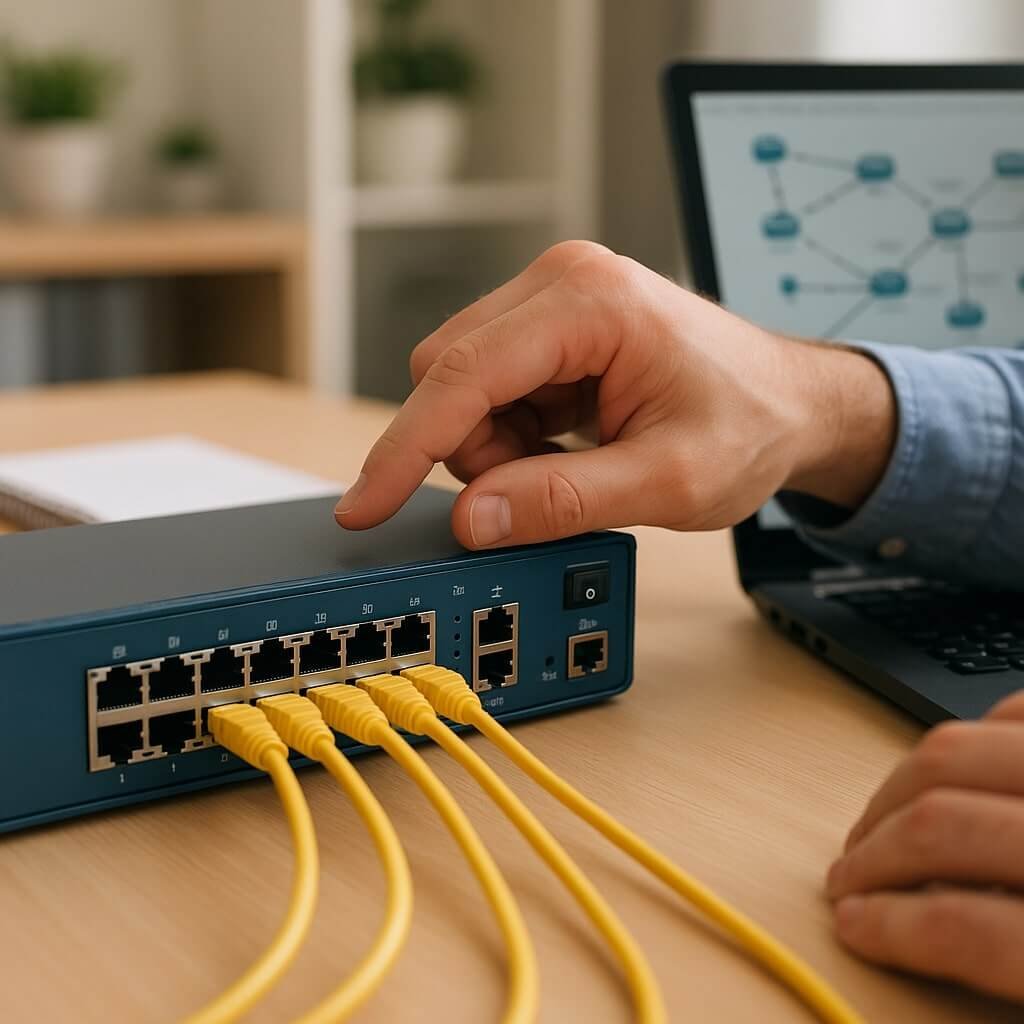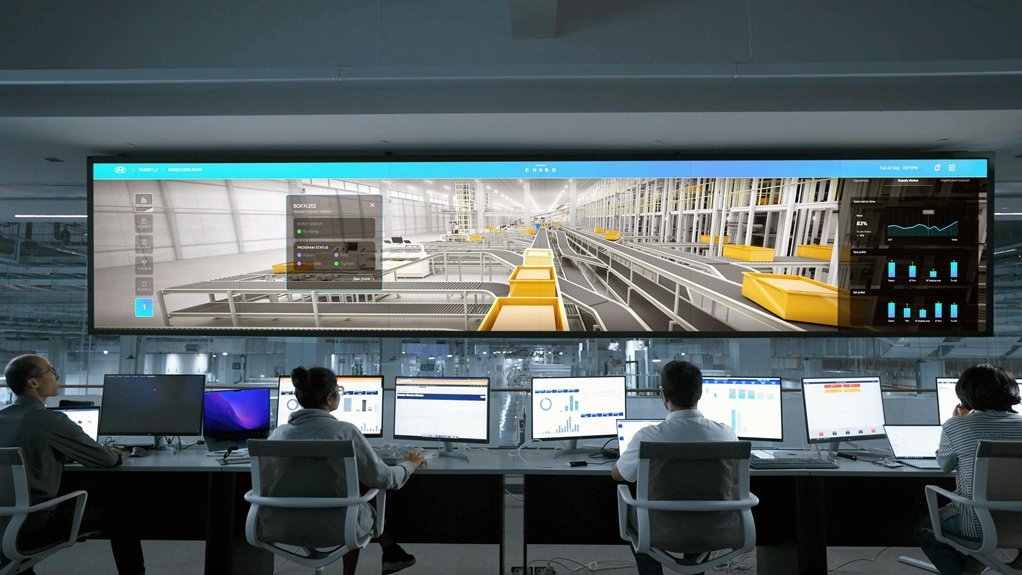Managed network security services are essential for protecting your organization from increasingly sophisticated cyber threats. These services combine advanced technologies with expert personnel to guarantee continuous monitoring, threat detection, and effective incident response. By understanding how these elements work together, you can appreciate the proactive defenses they provide. But what specific components make up these services, and how do they adapt to the evolving landscape of cybersecurity?
Key Takeaways
- Managed Network Security Services protect organizations from cyber threats through continuous monitoring and expert personnel, allowing focus on core business functions.
- They include components such as threat detection technologies, incident response protocols, and regular vulnerability assessments.
- Proactive measures like Intrusion Detection Systems (IDS) and behavioral analytics help identify and mitigate potential breaches in real time.
- Swift incident response strategies minimize damage during security breaches and ensure effective communication with stakeholders.
- Outsourcing network security offers cost savings, access to specialized professionals, and scalable solutions to adapt to changing business needs.
Understanding Managed Network Security Services
As cyber threats evolve, understanding Managed Network Security Services (MNSS) becomes essential for organizations aiming to safeguard their digital assets.
These managed services provide a thorough approach to network security, leveraging advanced technologies and expert personnel to monitor, detect, and respond to threats in real-time. By outsourcing network security, you can focus on core business functions while experts handle the complexities of threat management.
Managed Network Security Services offer a comprehensive solution, enabling organizations to prioritize their core functions while experts manage threat detection and response.
MNSS typically includes features like continuous monitoring, vulnerability assessments, and incident response, ensuring that your organization maintains a robust security posture. Additionally, these services help in compliance with regulatory standards, offering peace of mind.
Ultimately, implementing MNSS is a strategic investment that enhances your organization’s resilience against increasing cyber threats.
Key Components of Managed Network Security
To effectively secure your network, understanding key components like threat detection technologies and incident response protocols is essential.
These elements work in tandem to identify vulnerabilities and mitigate risks swiftly.
Threat Detection Technologies
When evaluating managed network security, understanding threat detection technologies is essential, as they serve as the backbone of a robust security posture. These technologies help identify and mitigate risks before they escalate.
Here are three critical components you should focus on:
- Anomaly Detection: This technology analyzes network behavior to identify deviations from normal patterns, signaling potential threats.
- Threat Hunting: Proactively searching for hidden threats within the network, threat hunting enhances your security by identifying vulnerabilities that automated systems might miss.
- Real-time Monitoring: Continuous surveillance of network traffic enables immediate detection of suspicious activities, ensuring timely responses to potential breaches.
Incident Response Protocols
Incident response protocols are critical for effectively managing cybersecurity incidents, ensuring that organizations can swiftly contain and mitigate damage.
You’ll need to establish a clear framework for incident escalation, which helps prioritize and address threats based on their severity. This involves defining roles, responsibilities, and escalation paths within your team to facilitate rapid decision-making.
Your response strategies should include containment measures, eradication processes, and recovery plans. By implementing these strategies, you can minimize the impact on operations and protect sensitive data.
Regularly testing and updating these protocols is essential to adapt to evolving threats. Remember, a well-defined incident response plan not only streamlines your response but also strengthens your overall security posture against future attacks.
Threat Detection and Prevention Mechanisms
In today’s cybersecurity landscape, implementing robust threat detection and prevention mechanisms is essential for safeguarding your network.
You’ll find that Intrusion Detection Systems (IDS) play a pivotal role in identifying potential breaches, while behavioral analytics techniques enhance your ability to spot anomalies in user behavior.
Additionally, integrating threat intelligence enables you to stay ahead of emerging threats, ensuring a proactive defense strategy.
Intrusion Detection Systems
As cyber threats continue to evolve, deploying Intrusion Detection Systems (IDS) becomes essential for organizations aiming to protect their networks. IDS are critical in identifying potential network breaches before they escalate.
Here are three key detection strategies you should consider:
- Signature-Based Detection: This method uses predefined patterns to identify known threats.
- Anomaly-Based Detection: This approach establishes a baseline of normal network behavior and flags deviations as potential threats.
- Hybrid Detection: Combining both signature and anomaly-based techniques, this method enhances detection capabilities.
Implementing these strategies allows you to proactively monitor for suspicious activity, ensuring that your network remains secure against evolving threats.
Behavioral Analytics Techniques
Behavioral analytics techniques have emerged as a pivotal approach in threat detection and prevention mechanisms, leveraging data patterns to identify anomalies in user behavior.
By analyzing historical data, these techniques establish a baseline for normal activities, enabling you to spot deviations that may indicate potential threats. For instance, if a user suddenly accesses sensitive data at unusual hours, anomaly detection algorithms flag this behavior for further investigation.
This proactive monitoring not only helps in identifying insider threats but also external breaches that exploit user credentials.
Essentially, employing behavioral analytics allows you to enhance your security posture by ensuring that any irregularities in user behavior are promptly addressed, thereby minimizing the risk of data breaches and other cyber threats.
Threat Intelligence Integration
Integrating threat intelligence into your security framework greatly enhances threat detection and prevention mechanisms. This approach enables you to proactively defend against emerging threats by leveraging real-time data.
Here are three key benefits:
- Enhanced Threat Sharing: By collaborating with other organizations, you gain insights that bolster your defenses, making your network more resilient.
- Intelligence Platforms: Utilizing advanced intelligence platforms allows for streamlined data analysis, enabling quicker identification of potential threats.
- Improved Response Times: With actionable intelligence at your fingertips, you can markedly reduce response times to incidents, mitigating potential damage.
Incorporating these elements into your security strategy not only fortifies your defenses but also positions your organization to stay ahead of evolving cyber threats.
Incident Response and Management
When a security incident occurs, swift and effective response is essential to minimize damage and restore normal operations. You need to implement structured response strategies that address the specific nature of the incident.
First, assess the severity of the situation to determine the level of incident escalation required. This involves classifying the incident and mobilizing appropriate resources quickly.
You’ll then engage your incident response team to execute predetermined protocols, ensuring all actions are documented for future analysis.
Communication is vital throughout this process, both internally and externally, to maintain transparency and manage stakeholder expectations.
Continuous Monitoring and Analysis
To effectively safeguard your organization against evolving threats, continuous monitoring and analysis of your network is essential.
This proactive approach guarantees that you’re not just reacting to incidents but actively defending against them.
Here are three key components of effective continuous monitoring:
- Continuous Threat Detection: This involves real-time analysis of network traffic to identify and mitigate potential threats before they escalate.
- Proactive Vulnerability Assessments: Regular evaluations of your systems help pinpoint weaknesses before attackers can exploit them.
- Automated Alerts and Reporting: Implementing automated tools allows for immediate notification of suspicious activities, guaranteeing swift action.
Benefits of Outsourcing Network Security
Outsourcing network security can greatly enhance your organization’s defenses while optimizing resources. By leveraging managed security services, you’ll experience significant cost savings, allowing for better resource allocation.
Outsourcing network security enhances defenses and optimizes resources, allowing for significant cost savings and improved focus on strategic initiatives.
This shift enables your team to focus on strategic planning rather than day-to-day security concerns. You’ll gain expert access to professionals who specialize in risk mitigation, ensuring that your defenses are robust and up-to-date.
Furthermore, sourcing from a managed service provider offers scalability options to adapt to changing business needs. With compliance assurance included, you can navigate regulations confidently.
Additionally, technology upgrades become more manageable, fostering operational efficiency. Ultimately, outsourcing empowers you to maintain a resilient security posture while freeing up internal resources for core business initiatives.
Choosing the Right Managed Security Service Provider
When choosing a managed security service provider, you’ll need to assess their service offerings to guarantee they align with your specific security needs.
Evaluate the provider’s expertise by examining their certifications, experience, and client references. This careful analysis will help you identify a partner equipped to effectively safeguard your network.
Assessing Service Offerings
How can you guarantee that the Managed Security Service Provider (MSSP) you choose aligns with your organization’s unique security needs?
Start by conducting a thorough provider evaluation.
Consider these essential factors in your service comparison:
- Service Scope: Assess the breadth of services offered, including threat detection, incident response, and compliance management.
- Customization: Evaluate how well the MSSP can tailor its offerings to fit your specific security requirements and organizational structure.
- Technology Stack: Examine the tools and technologies utilized by the provider to confirm they align with industry standards and your existing infrastructure.
Evaluating Provider Expertise
Selecting the right Managed Security Service Provider (MSSP) hinges on their expertise and experience in the field.
Begin with a thorough experience evaluation, focusing on provider qualifications and their track record in managing security threats. Check for relevant security certifications, such as CISSP or CISM, which signal compliance with industry standards.
Assess their industry expertise by examining case studies and their approach to service performance. Client references can provide valuable insight into their reliability and responsiveness.
Finally, evaluate their technical skills, ensuring they possess the necessary tools and knowledge to address your unique security challenges.
This extensive assessment will help you choose an MSSP that aligns with your organization’s security needs and objectives.
Common Challenges in Managed Network Security
While embracing managed network security services can greatly enhance your organization’s defense posture, several common challenges often arise during implementation and operation. You need to address these issues to guarantee effective protection against threats.
- Insider Threats: Employees may inadvertently or maliciously expose your network to vulnerabilities.
- Resource Limitations: Your organization mightn’t have sufficient budget or personnel to implement thorough security measures.
- Skill Shortages: There’s a lack of qualified professionals to manage complex security systems, which can lead to ineffective monitoring and response.
These challenges can lead to data breaches, malware attacks, and compliance issues if not adequately managed.
Prioritizing strategies to overcome these hurdles is vital for maintaining a robust security posture.
The Role of Compliance and Regulation
Compliance and regulation play an essential role in shaping your organization’s managed network security strategy. Adhering to compliance standards and regulatory frameworks is critical for effective data protection.
You must align your security practices with industry guidelines to mitigate risks and guarantee legal requirements are met. This involves implementing robust risk management protocols that not only safeguard sensitive information but also demonstrate due diligence in compliance efforts.
Regular audits and assessments will help identify gaps in your security posture, allowing for timely adjustments to meet evolving regulations. By prioritizing compliance, you not only protect your organization from potential fines and legal repercussions but also enhance your overall security framework, fostering trust with clients and stakeholders.
Future Trends in Managed Network Security Services
As organizations increasingly prioritize compliance, they must also stay ahead of emerging trends in managed network security services to maintain a robust defense against evolving threats.
Here are three key trends to watch:
- AI Integration: Leveraging artificial intelligence for real-time threat detection enhances cybersecurity automation, allowing faster responses to incidents.
- Zero Trust Architecture: Implementing a zero trust model guarantees that all users, whether on-site or part of a remote workforce, are continually authenticated and validated.
- Cloud Security Enhancements: As regulatory changes heighten privacy concerns, investing in advanced cloud security measures becomes essential to safeguard sensitive data against a shifting threat landscape.
Adapting to these trends through security orchestration will empower organizations to navigate future challenges effectively.
Conclusion
In summary, managed network security services are essential for organizations aiming to safeguard their digital assets against ever-evolving cyber threats. By integrating advanced technologies and expert oversight, these services provide robust threat detection, incident management, and continuous monitoring. As you consider implementing such solutions, it’s vital to evaluate potential providers based on their capabilities and alignment with your specific needs. Staying ahead of compliance requirements and adapting to future trends will further enhance your organization’s security posture.






